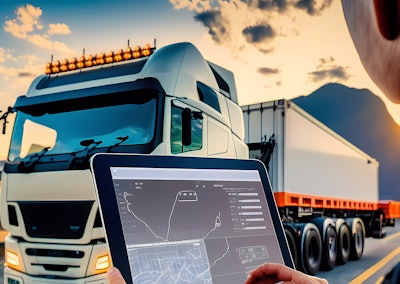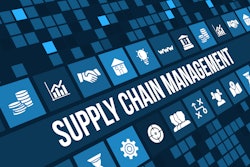
Every day, millions of vehicles transport goods worldwide, and with each mile comes fuel burned and emissions released. The global transport sector accounts for roughly 24% of energy-related CO₂ emissions, nearly one-third of which comes from freight trucks alone.
For fleet operators, fuel is often among the top operating expenses, and unplanned downtime or maintenance issues can throw off tight delivery schedules. In this context, a new ally has emerged: predictive analytics. By harnessing real-time data, fleets are becoming smarter, cleaner, and more reliable—quietly transforming how we move goods by preventing problems before they happen and optimizing every mile.
Targeting fuel wastage with data-driven efficiency
Fuel wastage has long been a pain point for fleet operators – and an environmental scourge. Consider idling, for example. Studies by the U.S. Department of Energy show that across all vehicles in the United States, more than 6 billion gallons of diesel and gasoline are squandered each year just from engines idling at rest stops, in traffic, and so on. That translates to over $18 billion of fuel literally burned for nothing. Predictive analytics helps fleets attack this kind of waste head-on. Modern telematics systems stream data on engine status, location, and fuel consumption in real time, alerting fleet managers when a truck is spending too long running idle or taking a circuitous route.
Driver behavior is another huge piece of the efficiency puzzle. Even with identical trucks and routes, an inefficient driving style can guzzle dramatically more fuel. Hard acceleration, speeding, and erratic braking all exact a toll on miles per gallon. Here, predictive analytics and machine learning turn visibility into action: onboard systems now monitor metrics like throttle usage, braking intensity, and cornering speeds, then feed that data into algorithms that score each driver’s efficiency. With gentle nudges, drivers can adjust in real time.
Predictive maintenance for cleaner, more reliable operations
Better fuel efficiency is one side of the coin; the other is ensuring vehicles run optimally with carbon emissions, greenhouse gases and other harmful pollutants in check. Traditionally, trucks are serviced either on a fixed schedule (e.g. an oil change every 10,000 miles) or reactively when a breakdown occurs. Both approaches leave room for costly problems: either a part fails unexpectedly on the road, or components are replaced too early “just in case.” Predictive analytics allows a smarter balance. By continuously monitoring data streams from engine sensors; temperatures, vibrations, and performance data, machine-learning models can detect the subtle warning signs that precede a failure. The payoff is huge. Implementing predictive maintenance has shown significant potential—McKinsey & Company research indicates it can reduce maintenance costs by up to 40% and cut unplanned downtime by as much as 50%.
Crucially, well-maintained trucks are also cleaner and more fuel-efficient. As tires wear down or engines fall out of tune, fuel economy can quietly deteriorate. By fixing issues at the optimal time – for instance, replacing a clogged air filter or servicing a misfiring fuel injector before it drags down performance – predictive maintenance keeps each vehicle running at peak efficiency.
Smarter routes and AI-powered driver coaching
Not all efficiency gains come from hardware – many stem from smarter planning. Route optimization is a clear example. Humans planning delivery routes might stick to familiar loops or err on the side of caution with extra buffer time. Advanced analytics, however, can crunch through millions of route permutations, traffic data, and delivery windows to find the truly optimal plan each day. Multiply these kinds of efficiency gains across thousands of delivery and trucking fleets worldwide, and the impact becomes transformative.
AI-powered platforms today can give drivers real-time feedback not only on fuel use, but also on safety and compliance – for example, warning a driver if they are likely to hit an upcoming congestion point and suggesting an alternate route, or providing gentle coaching to maintain steady speeds and safe following distances. This kind of AI co-pilot makes drivers partners in efficiency. By analyzing thousands of trips, algorithms can identify what the best drivers do differently – say, anticipating traffic lights to minimize stoppage, or taking foot off the accelerator approaching a hill crest – and distill those insights into teachable prompts for everyone.
Analytics-driven route and driver optimization also tackles the problem of empty miles – when trucks travel empty or partially loaded, often on return journeys. Machine-learning models can help logistics planners consolidate loads and match backhauls (finding freight for the return leg) more effectively, so trucks run fuller and fewer trips are wasted.
Ensuring emissions compliance and system health
Beyond efficiency and cost, fleet operators face growing pressure from environmental regulations. Governments worldwide – from stringent Euro VI emission standards in Europe to the EPA and CARB requirements in the United States – demand that commercial vehicles minimize pollutants like particulate matter (soot) and nitrogen oxides. Modern diesel trucks are equipped with complex aftertreatment systems (such as diesel particulate filters (DPF) and selective catalytic reduction units) to scrub exhaust clean. But these systems themselves require careful upkeep. If a DPF gets clogged or a sensor fails, emissions can spike and the vehicle may fall out of compliance, risking fines or forced downtime until repairs are made. Here, predictive analytics is proving invaluable in maintaining system-level health and compliance. Fleet monitoring platforms now track the performance of aftertreatment systems in real time – pressures, temperatures, regeneration cycles, fluid levels – looking for anomalies that suggest trouble ahead.
A well-maintained truck emits a fraction of the pollutants of one with a misfiring engine or clogged DPF. Multiply that across the tens of millions of commercial vehicles globally, and the public health implications are significant.
The road ahead: AI-enhanced fleets in the next decade
Standing at the intersection of technology and transportation, one gets the sense that we are only scratching the surface of what predictive analytics can do for fleets. Over the next 5-10 years, expect these tools to become even more advanced, ubiquitous, and deeply integrated into fleet operations. As algorithms improve and computing power grows, fleet managers will be able to leverage far more of this exhaustive data to optimize their KPIs. Expect to see predictive models that not only tell you when to service a truck, but also exactly how to set up each vehicle’s configurations for fuel efficiency given its usage patterns. In the coming years, predictive analytics might extend beyond individual vehicles to system-wide automation – imagine an AI “dispatcher” forecasting demand surges, weather impacts, or maintenance needs across an entire fleet.
The drive for sustainability will only intensify this trend. With climate targets looming, the transport and logistics sector faces pressure to dramatically cut emissions. While electrification of fleets is underway, the reality is that diesel and gas trucks will dominate long-haul freight for at least the next decade in much of the world. Predictive analytics thus serves as a critical bridge to a lower-carbon future, squeezing out inefficiencies from conventional vehicles until cleaner technologies can fully take over.



















